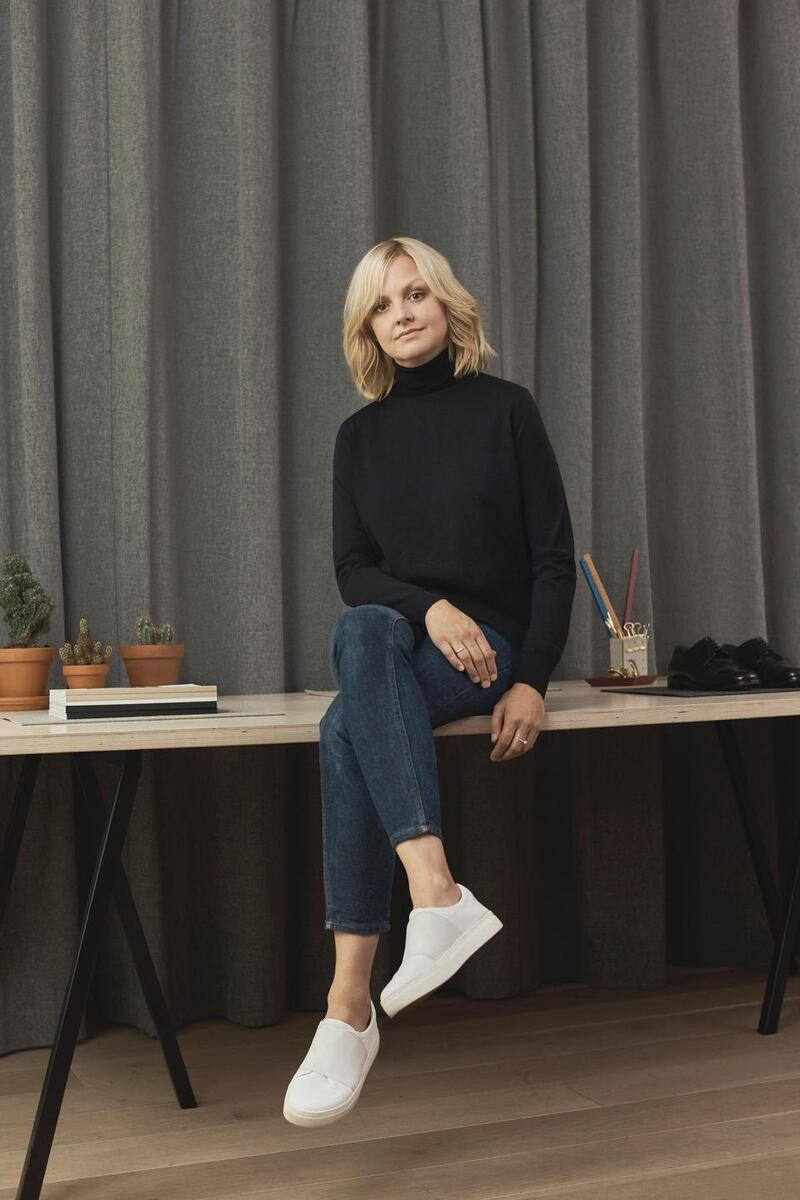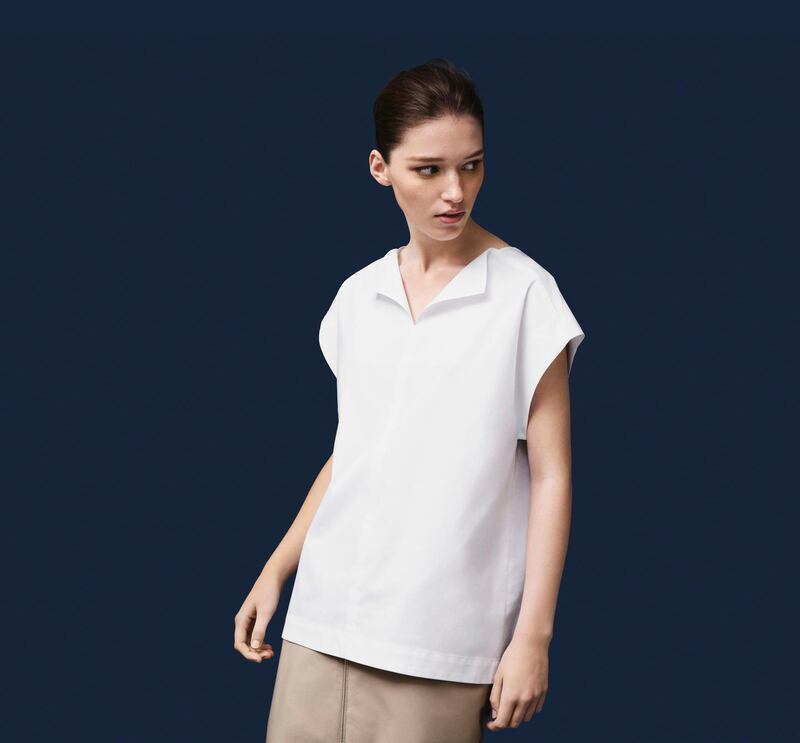On a sunny day in Milan, a black curtain in a darkened cinema opens to reveal the magic inside, with visitors handed black gloves for the experience. This is New Spring, a six metre high sculptural tree made from recycled aluminium that emits mist filled bubbles, blossoms that burst when touched.
It is the work of Studio Swine in London, a Japanese/British partnership committed to sustainability. The interactive installation drew from modernist Italian design and Italian public fountains and was a collaboration with fashion brand Cos “because we share many common values” explains Karin Gustafsson, creative director of the company.

“Working together is a natural fit and a way of engaging with the creative community from whom we draw inspiration so regularly,” she says. Cos has been active for the past five years at Salone e Mobile in Milan, as well as the Serpentine in London, forging links with the art and design world.
Understated, easygoing
Low key, understated and easygoing is how Gustafsson describes her personal style, reflecting that of Cos whose unfussy aesthetic and accessible prices have become such an international success.
Dressed simply in jeans (“my everyday uniform”), a black bomber jacket (“from the autumn winter 2017 collection”) and black sandals, she has a gentle, unprepossessing manner, and with blonde hair and brown eyes, Viking good looks. At the helm of Cos since its inception 10 years ago, she has masterminded its strong aesthetic of timeless, functional and tactile design which, she insists, is due to teamwork.
“At the beginning there were 15 of us and now it has grown to 200. Our design team is very international and everything we design has to have quality – that is very important. We do a lot of fittings and we don’t think of age when designing.”
To mark its 10th anniversary this year, for example, Cos has launched a 10-piece capsule collection with patterns created like a jigsaw from one continuous piece of material. “We started with paper”, explains Gustafsson. “We folded it with the material to see what shapes we could create. We looked at different designs and geometric shapes, how one fold or one cut could create the strongest shape and so maximise the use of materials”.

The resulting designs, in sand and white cotton and polyester, feature rectilinear silhouettes, double layered panels in shirt dresses, men’s jackets with functional pockets and women’s coats with kimono style sleeves. The collection went on sale at the beginning of April.
Background in tailoring
Gustafsson’s background is in tailoring. “I don’t draw, I drape, and I made clothes from an early age, but I always wanted to do fashion design and after studying tailoring (she worked with one of the top tailors in Stockholm), I came to London because of the fashion and art schools.”

After graduation she was hired for the Cos project and established its signature clean lines and understated modernist design. “I wanted to be part of a team. We want to maintain the focus on functionality,” she says. The tactile quality of fabric is key “and we do a lot of research and are developing our own jacquard, exploring new textures and materials”.
She is particularly proud of Cos’s shirting. “We explore the shape in different materials in every collection – it is what customers expect from us,” she says, pointing to the one she is wearing in a soft poplin/cotton cheesecloth, from the current collection.
This season’s shirts include cotton linen boat neck styles, transparent check silk T-shirts and cotton poplin short sleeved shirts. A flattering elastic frill decorates a tunic style top in cotton linen.

Passionate about art, architecture and design, she believes that such interests inform the collections in their own way. The colours and shapes used in last winter’s collection, for instance, were drawn from the work of the English artist Lynette Yiadom Boatkye and a Dutch inventor Boyan Slat, who devised the Ocean Clean Up.
A key reference for the 10th anniversary collection was Tim Kerp, a German designer and creator of Duetto tables, made for ecological, aesthetic and production efficiency. “We look to people we admire and appreciate and those with a similar mindset and feeling for material. It shows what we care about and customers appreciate it. Art is ahead of fashion and is an immense inspiration for fashion.”












